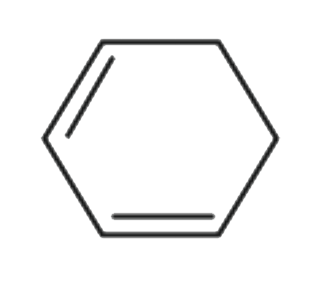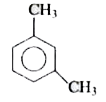Which of the following compound on oxidative ozonolysis give malonic acid as only product ?
CH2=CH−CH2−CH=CH2
CH2=CH−CH=CH2


The correct Answer is:C
To solve the question of which compound gives malonic acid as the only product upon oxidative ozonolysis, we will analyze the given options step by step.
1. Understanding Oxidative Ozonolysis:
- Oxidative ozonolysis involves the cleavage of double bonds in alkenes by ozone (O3), resulting in the formation of carbonyl compounds (aldehydes or ketones) which can further oxidize to carboxylic acids.
2. Identifying the Structure of Malonic Acid:
- Malonic acid (C3H4O4) has the structure HOOC-CH2-COOH. It is a dicarboxylic acid with two carboxyl groups.
3. Analyzing Each Option:
- Option A: CH2=CH-CH2-CH=CH2
- Cleavage leads to two moles of CH2=O (which can oxidize to form carboxylic acids). This option produces malonic acid along with methanoic acid, hence it is incorrect.
- Option B: CH2=CH-CH=CH2
- Similar cleavage occurs, leading to the formation of two moles of CH2=O, which can oxidize to form carboxylic acids. This results in oxalic acid and malonic acid, hence it is incorrect.
- Option C: CH2=CH-CH2-CH=CH2
- The ozonolysis of this compound leads to the formation of two moles of CH2-COOH upon further oxidation. This gives exclusively malonic acid (HOOC-CH2-COOH), making this option correct.
- Option D: CHO-CH2-CHO
- This option also leads to the formation of oxalic acid and succinic acid upon ozonolysis, hence it is incorrect.
4. Conclusion:
- The only compound that gives malonic acid as the exclusive product upon oxidative ozonolysis is Option C.
Final Answer:
- Option C is the correct answer.
- Oxidative ozonolysis involves the cleavage of double bonds in alkenes by ozone (O3), resulting in the formation of carbonyl compounds (aldehydes or ketones) which can further oxidize to carboxylic acids.
- Malonic acid (C3H4O4) has the structure HOOC-CH2-COOH. It is a dicarboxylic acid with two carboxyl groups.
- Option A: CH2=CH-CH2-CH=CH2
- Cleavage leads to two moles of CH2=O (which can oxidize to form carboxylic acids). This option produces malonic acid along with methanoic acid, hence it is incorrect.
- Option B: CH2=CH-CH=CH2
- Similar cleavage occurs, leading to the formation of two moles of CH2=O, which can oxidize to form carboxylic acids. This results in oxalic acid and malonic acid, hence it is incorrect.
- The ozonolysis of this compound leads to the formation of two moles of CH2-COOH upon further oxidation. This gives exclusively malonic acid (HOOC-CH2-COOH), making this option correct.
- This option also leads to the formation of oxalic acid and succinic acid upon ozonolysis, hence it is incorrect.
- The only compound that gives malonic acid as the exclusive product upon oxidative ozonolysis is Option C.
- Option C is the correct answer.
Similar Questions
Knowledge Check
Which one of the following compounds give only one isomer upon nitration ?
A B
B C
C D
D
Which of the following compounds may give reaction with acidic KMnO4 ?
A B
B C
C D
D
Which of the following compound on hydrolysis followed byheating gives a product, which gives positive iodoform test?
ACH3−∣CCO2EtH−O∣∣C−CH2−CH3B CCH3−C∣CO2EtH−CO2ErD
CCH3−C∣CO2EtH−CO2ErD
Which of the following gives benzoic acid on oxidation :
View SolutionWhich of the following will give same product on ozonolysis

View SolutionWhich of the following on oxidation can give a carboxylic acid in one step ?
View SolutionWhich of the following compounds is resistant to periodic acid oxidation ?
View SolutionHydrocarbon (A) C6H10 on treatment with H2Ni,H2/Lindlar's catalyst or Na/liq. NH3 forms three different reduction products (B), (C), (D) respectively. (A) does not form any salt with ammonical AgNO3 solution, but (E) forms salt on heating with NaNH2 in an inert solvent. Compound (E) reacts with CH3l to give (F). Compound (D) on oxidative ozonolysis gives n-butanoic acid along with other product.
(F) on ozonolysis will produce -
View Solution
